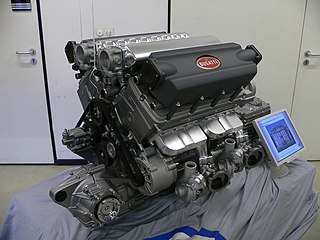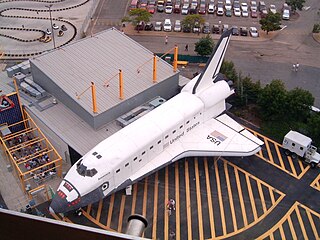Related Research Articles

Engineering is the practice of using natural science, mathematics, and the engineering design process to solve problems, increase efficiency and productivity, and improve systems. Modern engineering comprises many subfields which include designing and creating infrastructure, machinery, vehicles, electronics, materials, and energy.

Mechanical engineering is the study of physical machines that may involve force and movement. It is an engineering branch that combines engineering physics and mathematics principles with materials science, to design, analyze, manufacture, and maintain mechanical systems. It is one of the oldest and broadest of the engineering branches.

Systems engineering is an interdisciplinary field of engineering and engineering management that focuses on how to design, integrate, and manage complex systems over their life cycles. At its core, systems engineering utilizes systems thinking principles to organize this body of knowledge. The individual outcome of such efforts, an engineered system, can be defined as a combination of components that work in synergy to collectively perform a useful function.

Computer-Aided Design (CAD) is the use of computers to aid in the creation, modification, analysis, or optimization of a design. This software is used to increase the productivity of the designer, improve the quality of design, improve communications through documentation, and to create a database for manufacturing. Designs made through CAD software are helpful in protecting products and inventions when used in patent applications. CAD output is often in the form of electronic files for print, machining, or other manufacturing operations. The terms computer-aided drafting (CAD) and computer-aided design and drafting (CADD) are also used.
The rational unified process (RUP) is an iterative software development process framework created by the Rational Software Corporation, a division of IBM since 2003. RUP is not a single concrete prescriptive process, but rather an adaptable process framework, intended to be tailored by the development organizations and software project teams that will select the elements of the process that are appropriate for their needs. RUP is a specific implementation of the Unified Process.
Automotive engineering, along with aerospace engineering and naval architecture, is a branch of vehicle engineering, incorporating elements of mechanical, electrical, electronic, software, and safety engineering as applied to the design, manufacture and operation of motorcycles, automobiles, and trucks and their respective engineering subsystems. It also includes modification of vehicles. Manufacturing domain deals with the creation and assembling the whole parts of automobiles is also included in it. The automotive engineering field is research intensive and involves direct application of mathematical models and formulas. The study of automotive engineering is to design, develop, fabricate, and test vehicles or vehicle components from the concept stage to production stage. Production, development, and manufacturing are the three major functions in this field.

In industry, product lifecycle management (PLM) is the process of managing the entire lifecycle of a product from its inception through the engineering, design and manufacture, as well as the service and disposal of manufactured products. PLM integrates people, data, processes, and business systems and provides a product information backbone for companies and their extended enterprises.
A design engineer is an engineer focused on the engineering design process in any of the various engineering disciplines and design disciplines like Human-Computer Interaction. Design engineers tend to work on products and systems that involve adapting and using complex scientific and mathematical techniques. The emphasis tends to be on utilizing engineering physics and other applied sciences to develop solutions for society.
Reliability engineering is a sub-discipline of systems engineering that emphasizes the ability of equipment to function without failure. Reliability describes the ability of a system or component to function under stated conditions for a specified period of time. Reliability is closely related to availability, which is typically described as the ability of a component or system to function at a specified moment or interval of time.
Design for excellence is a term and abbreviation used interchangeably in the existing literature, where the X in design for X is a variable which can have one of many possible values. In many fields X may represent several traits or features including: manufacturability, power, variability, cost, yield, or reliability. This gives rise to the terms design for manufacturability, design for inspection (DFI), design for variability (DfV), design for cost (DfC). Similarly, other disciplines may associate other traits, attributes, or objectives for X.
Release engineering, frequently abbreviated as RE or as the clipped compound Releng, is a sub-discipline in software engineering concerned with the compilation, assembly, and delivery of source code into finished products or other software components. Associated with the software release life cycle, it was said by Boris Debic of Google Inc. that release engineering is to software engineering as manufacturing is to an industrial process:
Release engineering is the difference between manufacturing software in small teams or startups and manufacturing software in an industrial way that is repeatable, gives predictable results, and scales well. These industrial style practices not only contribute to the growth of a company but also are key factors in enabling growth.
A software factory is a structured collection of related software assets that aids in producing computer software applications or software components according to specific, externally defined end-user requirements through an assembly process. A software factory applies manufacturing techniques and principles to software development to mimic the benefits of traditional manufacturing. Software factories are generally involved with outsourced software creation.
A system architecture is the conceptual model that defines the structure, behavior, and more views of a system. An architecture description is a formal description and representation of a system, organized in a way that supports reasoning about the structures and behaviors of the system.

In engineering, hardware architecture refers to the identification of a system's physical components and their interrelationships. This description, often called a hardware design model, allows hardware designers to understand how their components fit into a system architecture and provides to software component designers important information needed for software development and integration. Clear definition of a hardware architecture allows the various traditional engineering disciplines to work more effectively together to develop and manufacture new machines, devices and components.
A test engineer is a professional who determines how to create a process that would best test a particular product in manufacturing and related disciplines, in order to assure that the product meets applicable specifications. Test engineers are also responsible for determining the best way a test can be performed in order to achieve adequate test coverage. Often test engineers also serve as a liaison between manufacturing, design engineering, sales engineering and marketing communities as well.

In manufacturing and design, a mockup, or mock-up, is a scale or full-size model of a design or device, used for teaching, demonstration, design evaluation, promotion, and other purposes. A mockup may be a prototype if it provides at least part of the functionality of a system and enables testing of a design. Mock-ups are used by designers mainly to acquire feedback from users. Mock-ups address the idea captured in a popular engineering one-liner: "You can fix it now on the drafting board with an eraser or you can fix it later on the construction site with a sledge hammer".
Product engineering refer to the process of designing and developing a device, assembly, or system such that it be produced as an item for sale through some product manufacturing process. Product engineering usually entails activity dealing with issues of cost, producibility, quality, performance, reliability, serviceability, intended lifespan and user features. These product characteristics are generally all sought in the attempt to make the resulting product attractive to its intended market and a successful contributor to the business of the organization that intends to offer the product to that market. It includes design, development and transitioning to manufacturing of the product. The term encompasses developing the concept of the product and the design and development of its hardware and software components. After the initial design and development is done, transitioning the product to manufacture it in volumes is considered part of product engineering.
Engineer to order is a production approach characterized by:
- Engineering activities need to be added to product lead time.
- Upon receipt of a customer order, the order engineering requirements and specifications are not known in detail. There is a substantial amount of design and engineering analysis required.

Manufacturing engineering or production engineering is a branch of professional engineering that shares many common concepts and ideas with other fields of engineering such as mechanical, chemical, electrical, and industrial engineering. Manufacturing engineering requires the ability to plan the practices of manufacturing; to research and to develop tools, processes, machines and equipment; and to integrate the facilities and systems for producing quality products with the optimum expenditure of capital.
Industrial and production engineering (IPE) is an interdisciplinary engineering discipline that includes manufacturing technology, engineering sciences, management science, and optimization of complex processes, systems, or organizations. It is concerned with the understanding and application of engineering procedures in manufacturing processes and production methods. Industrial engineering dates back all the way to the industrial revolution, initiated in 1700s by Sir Adam Smith, Henry Ford, Eli Whitney, Frank Gilbreth and Lilian Gilbreth, Henry Gantt, F.W. Taylor, etc. After the 1970s, industrial and production engineering developed worldwide and started to widely use automation and robotics. Industrial and production engineering includes three areas: Mechanical engineering, industrial engineering, and management science.
References
- ↑ Nikulchev, E.; Ilin, D.; Gusev, A. (2021). "Technology Stack Selection Model for Software Design of Digital Platforms". Mathematics . 9 (4): 308. doi: 10.3390/math9040308 .